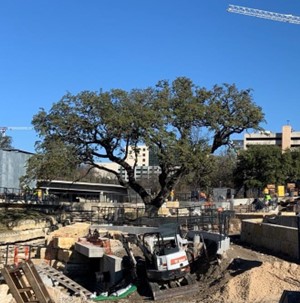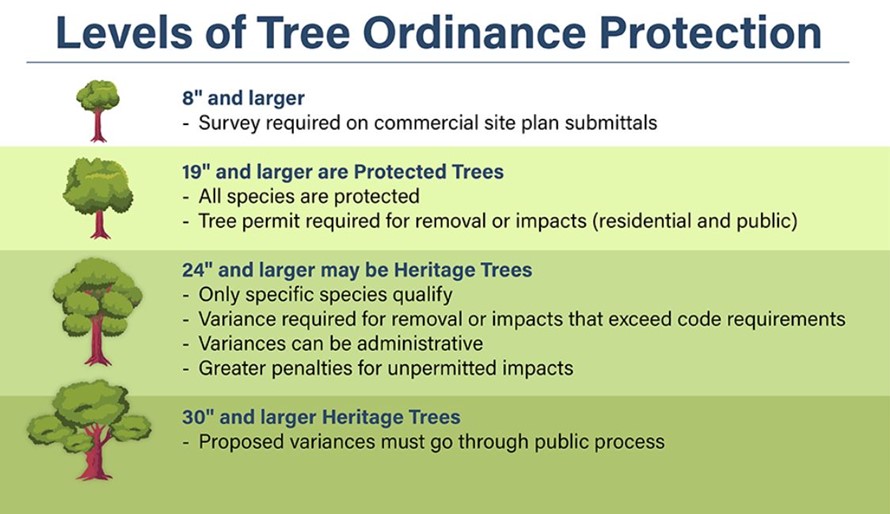How Does Austin Protect Our Trees?
Did you know the City of Austin protects trees on public and private property? In 1983, the City of Austin passed one of the first tree protection ordinances in the United States. The City continued its commitment to protecting valuable community trees by passing the Heritage Tree Ordinance in 2010.

A Heritage live oak is protected during development.
What is a "Protected" tree?
The Land Development Code (LDC) Section 25-8 defines “Protected” trees as those with a diameter at breast height (DBH 4.5 ft.) of 19 inches (60 inches circumference) or more. These trees require a permit for removal. Certain tree species (like live oaks) that are 24 inches DBH or larger have more protections (Heritage trees, ordinance passed in 2010) in place. See the following graphic for more information on how different sized trees are protected and what is required for a removal to be approved.

Tree protection varies under our ordinance depending on the type of property, tree size, and species.
What qualifies as "removal" of a protected tree?
Removal refers to excessive damage to the root system, excessive pruning, severing the trunk or uprooting the tree. A permit is required to impact regulated trees above or below ground.

A large live oak with proper protections in place during nearby development activity.
Who manages the permitting process?
It’s apparent that Austin is continuing to experience rapid growth, from new single-family homes to condos, shopping centers and apartment complexes. The City Arborist Program in the City’s Development Services Department is responsible for trees that will be impacted by this development. They make sure the rules in the Land Development Code (LCD) and Environmental Criteria Manual (ECM) are followed during construction. There is a formal review process in place for all regulated trees that may be negatively impacted during the development process.
Permits for Dead, Diseased, and Hazardous trees
Another common reason to remove protected trees involves the health of the tree. The City Arborist recognizes a special category of trees as "Dead, Diseased, Imminent Hazard" (DDI). Permits to remove DDI trees can be obtained at no cost to the tree manager or owner through the normal permitting process.
Dig deeper
This post only scratches the surface of our city’s local tree ordinance. If you want to learn more about how the City of Austin protects our trees visit the The City Arborist Program's permitting site. The City Arborist Program is part of the Development Services Department's Community Tree Preservation Division in the City of Austin.
Learn more about Margret Hofmann, the woman who made tree protection in Austin a reality and coined the term, Think Trees!
Article written by Sydnie Tafolla and Daniel Priest, City Arborist Program.
To learn more about our urban forest and how you can get involved, please visit austintexas.gov/trees.


